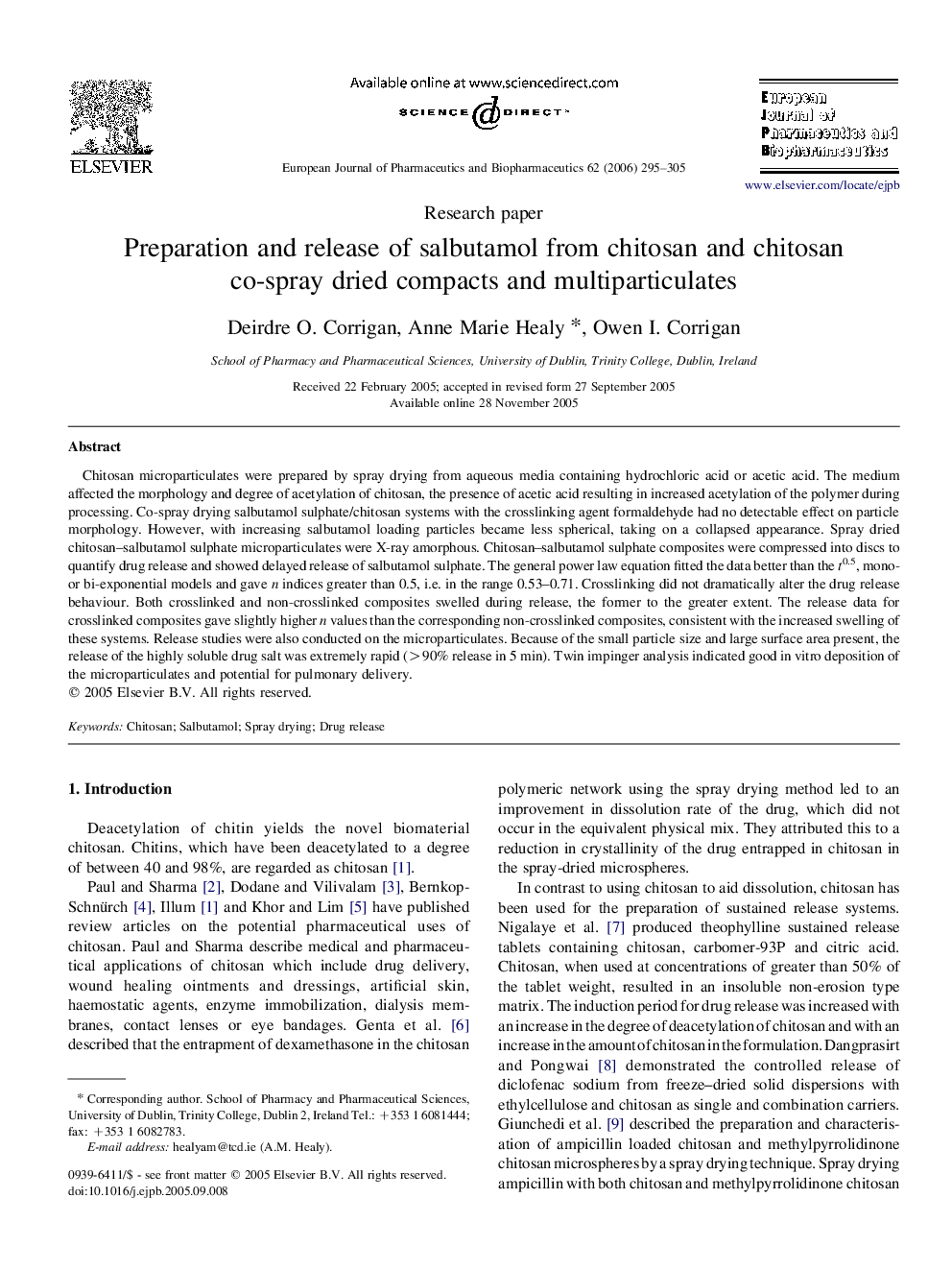| Article ID | Journal | Published Year | Pages | File Type |
|---|---|---|---|---|
| 2085172 | European Journal of Pharmaceutics and Biopharmaceutics | 2006 | 11 Pages |
Chitosan microparticulates were prepared by spray drying from aqueous media containing hydrochloric acid or acetic acid. The medium affected the morphology and degree of acetylation of chitosan, the presence of acetic acid resulting in increased acetylation of the polymer during processing. Co-spray drying salbutamol sulphate/chitosan systems with the crosslinking agent formaldehyde had no detectable effect on particle morphology. However, with increasing salbutamol loading particles became less spherical, taking on a collapsed appearance. Spray dried chitosan–salbutamol sulphate microparticulates were X-ray amorphous. Chitosan–salbutamol sulphate composites were compressed into discs to quantify drug release and showed delayed release of salbutamol sulphate. The general power law equation fitted the data better than the t0.5, mono- or bi-exponential models and gave n indices greater than 0.5, i.e. in the range 0.53–0.71. Crosslinking did not dramatically alter the drug release behaviour. Both crosslinked and non-crosslinked composites swelled during release, the former to the greater extent. The release data for crosslinked composites gave slightly higher n values than the corresponding non-crosslinked composites, consistent with the increased swelling of these systems. Release studies were also conducted on the microparticulates. Because of the small particle size and large surface area present, the release of the highly soluble drug salt was extremely rapid (>90% release in 5 min). Twin impinger analysis indicated good in vitro deposition of the microparticulates and potential for pulmonary delivery.
